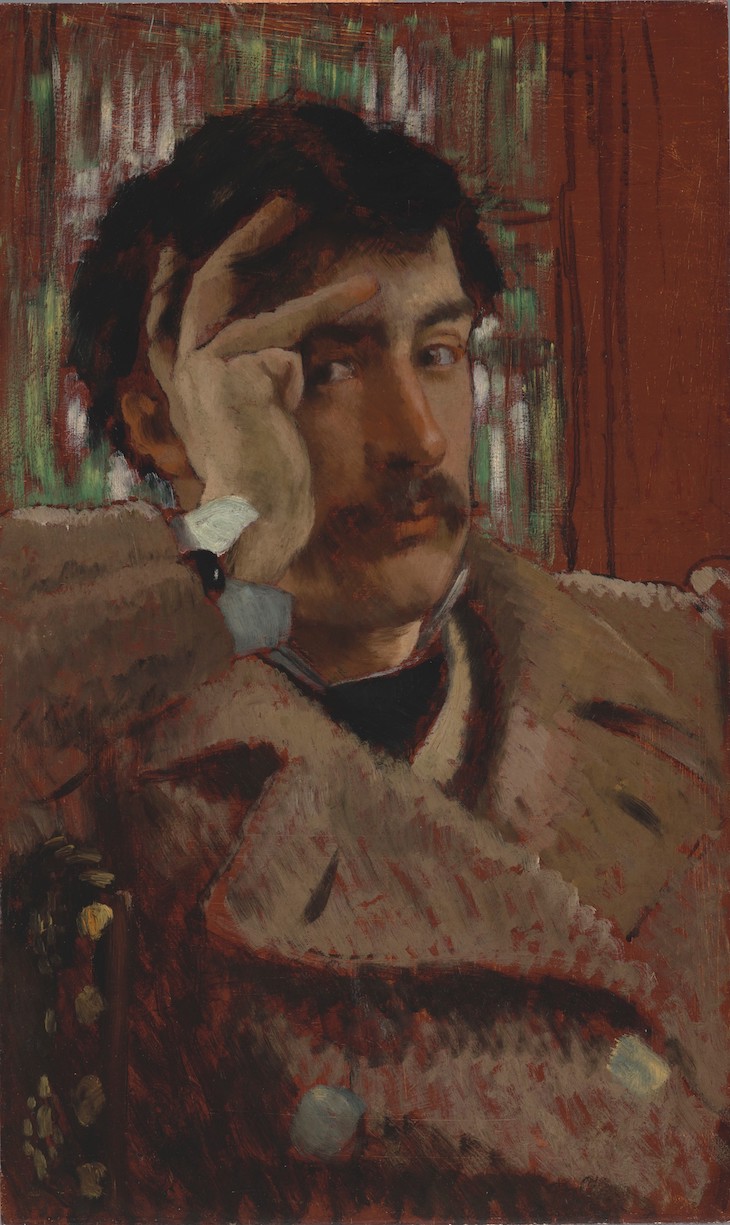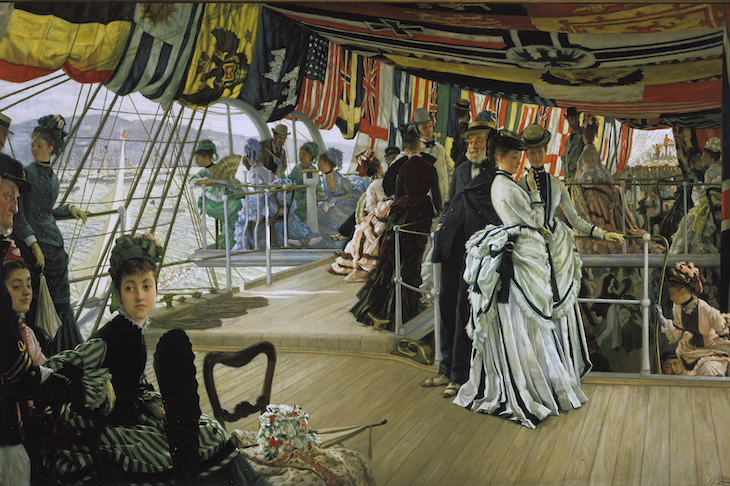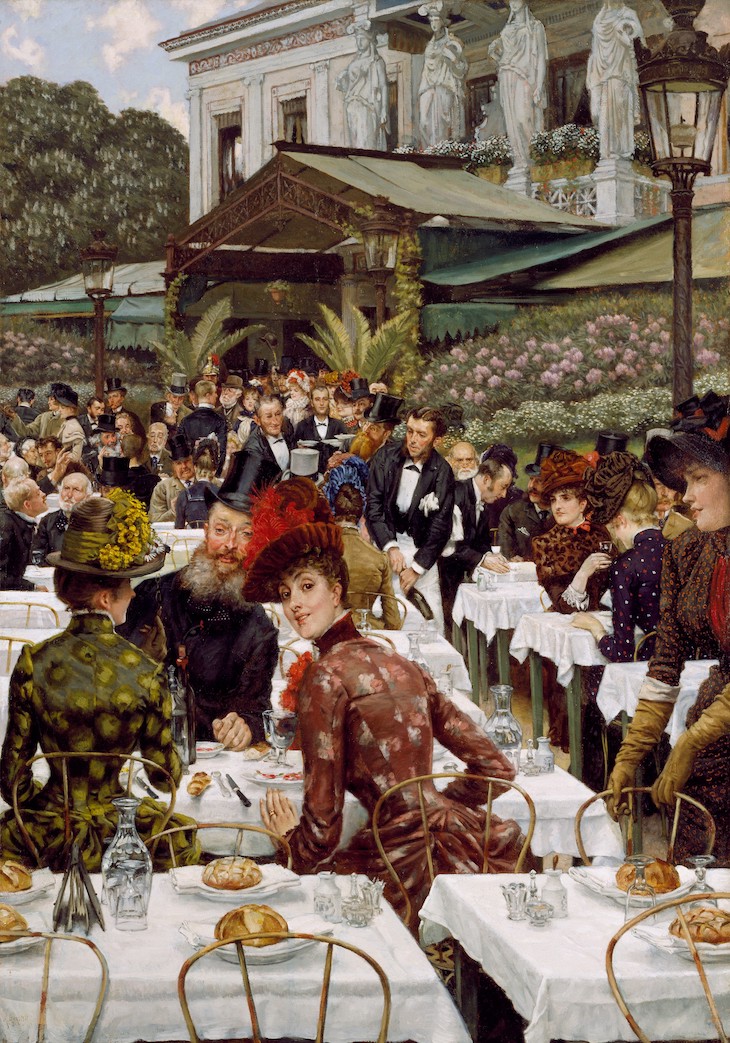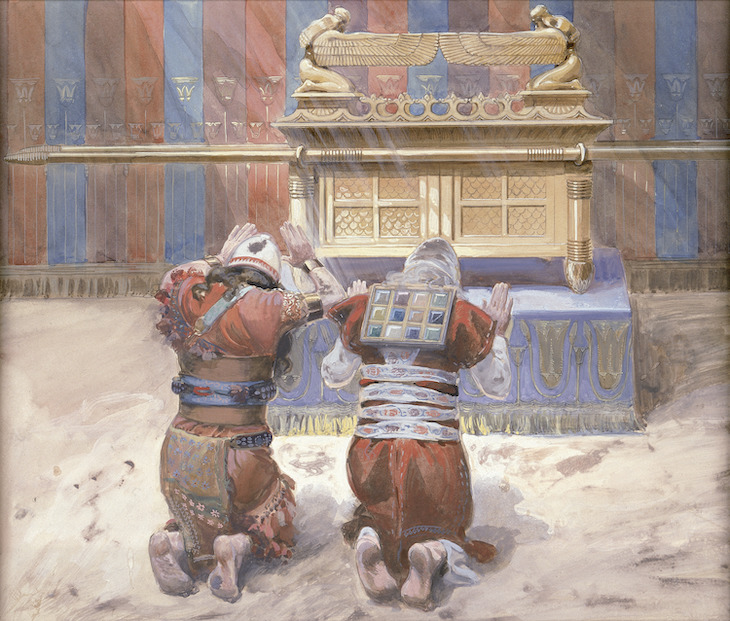Tissot’s probing observations of modern life in Paris and London made him famous in the 19th century, but he has since been eclipsed by his Impressionist peers. With around 60 paintings, this show ranges from his early conversation pieces to his mystical late works. Find out more from the Legion of Honor’s website.
Preview the exhibition below | View Apollo’s Art Diary here

Self Portrait (c. 1865), James Tissot. Fine Arts Museums of San Francisco
Infatuated with English culture, Jean-Jacques Tissot – having changed his name to James – spent much of his twenties painting scenes from medieval romance. In around 1863, however, spurred by his acquaintance with painters such as Degas and Manet, he began to paint portraits of modern Parisian subjects, which soon brought him success at the Paris Salon. This self-portrait from 1865 shows the artist on the cusp of fame; the clear contours and close-cropped vertical composition reveal his interest in Japanese pictures at this time.

The Ball on Shipboard (c. 1874), James Tissot. Tate Britain
After the fall of the Paris Commune, which he had defended, Tissot departed for London in 1871, where his reputation blossomed. For many, The Ball on Shipboard and canvases like it reflected Victorian society as it wished to see itself, at once elegant and jovial – though some critics were less enthusiastic, with one offering a description of a lewder scene than might appear, of ‘the girls […] spread about in every attitude’, who have ‘borrowed their mistresses’ dresses’ and ‘are evidently the “high life below stairs” of the port’.

La Femme à Paris: The Artists’ Wives (1885), James Tissot. Chrysler Museum of Art, Norfolk
Tissot returned to Paris in 1882, and for a while picked up where he had left off. This painting depicts the celebration on the evening before the official opening of the Paris Salon, when the final coats of varnish had been applied and the artists could let their hair down with their wives.

Moses and Joshua in the Tabernacle (c. 1896–c. 1902), James Tissot. Photo: John Parnell; © The Jewish Museum, New York
In 1885, Tissot suddenly experienced a revival of his Catholic faith, and for the remaining 17 years of his life focused on painting religious scenes. He attended Spiritualist séances and made several trips to the Holy Land, producing hundreds of watercolours of biblical illustrations. The exhibition at the Legion of Honor shines a light on this often-ignored period of the artist’s career, and teases out the influence of his illustrated ‘Tissot Bible’ upon 20th-century film-makers.










![Masterpiece [Re]discovery 2022. Photo: Ben Fisher Photography, courtesy of Masterpiece London](http://www.apollo-magazine.com/wp-content/uploads/2022/07/MPL2022_4263.jpg)
The threat to Sudan’s cultural heritage